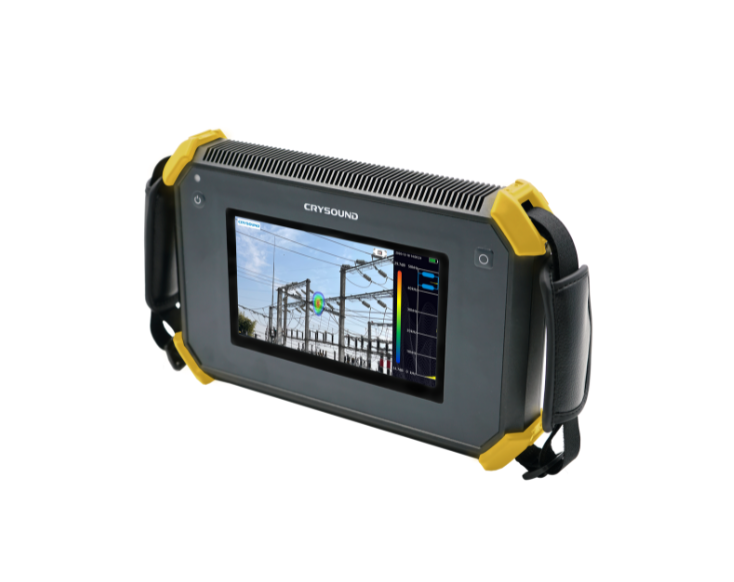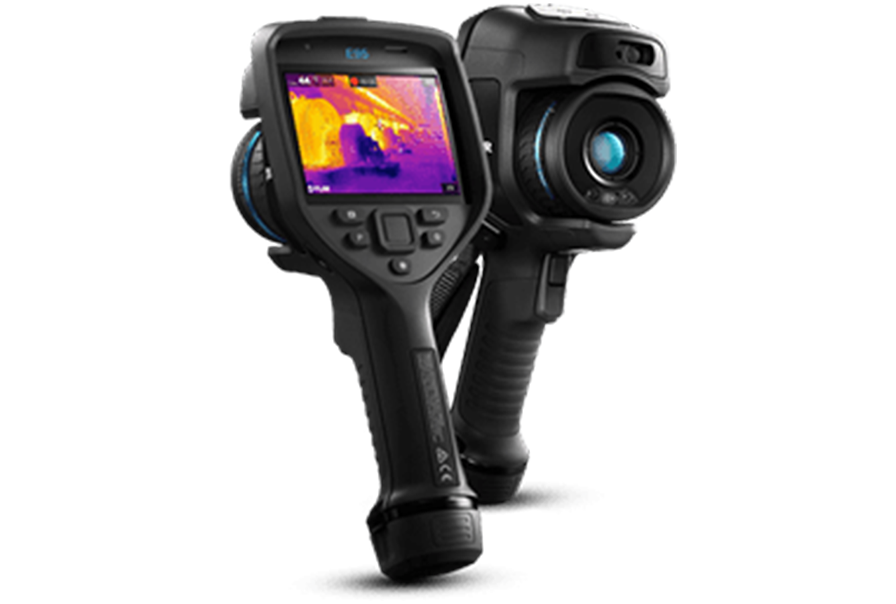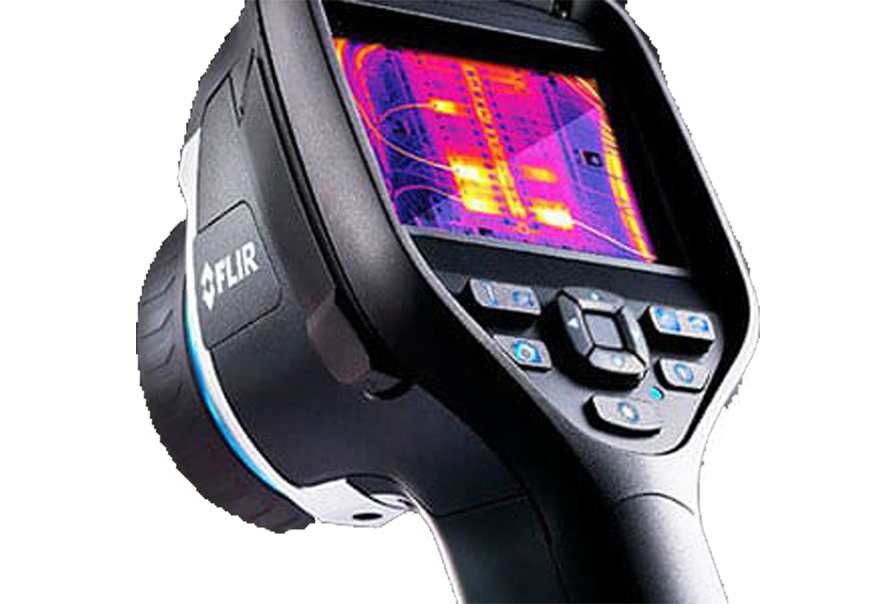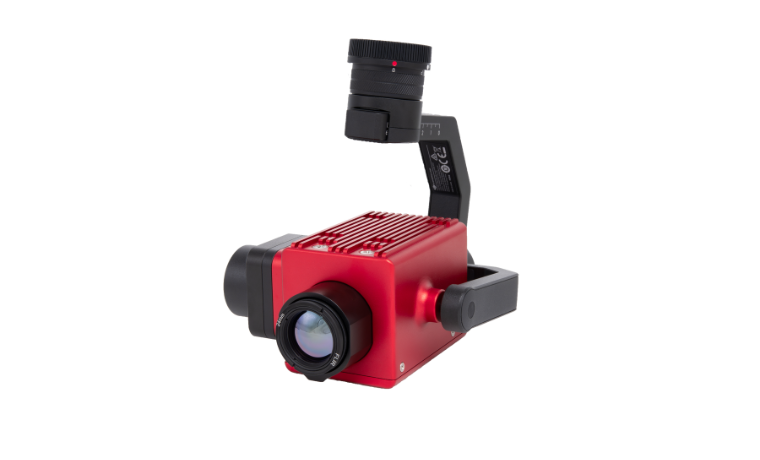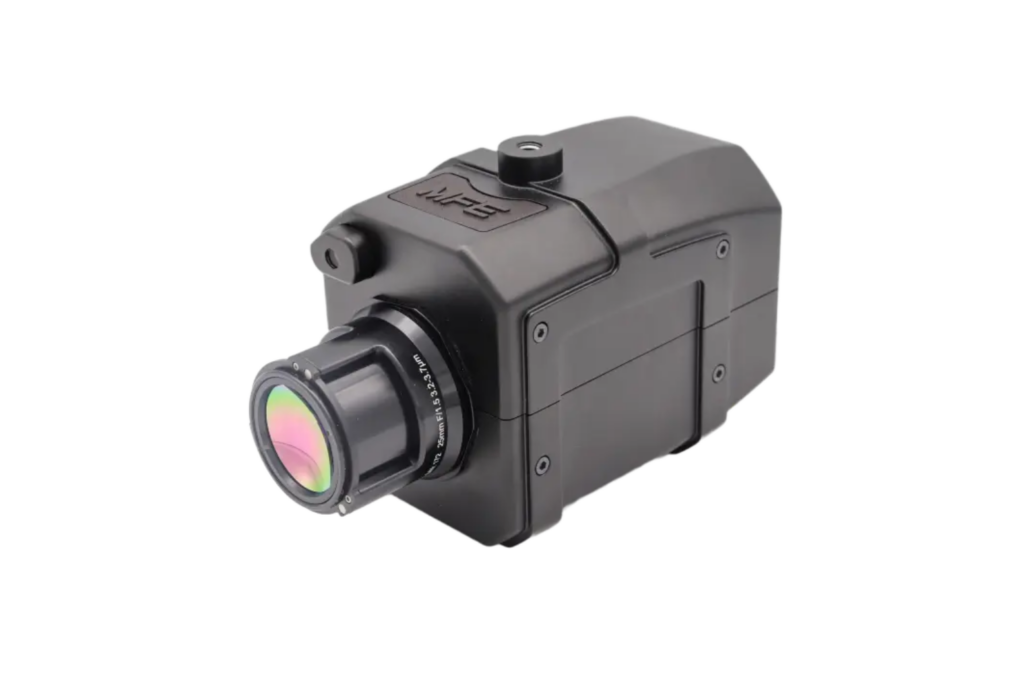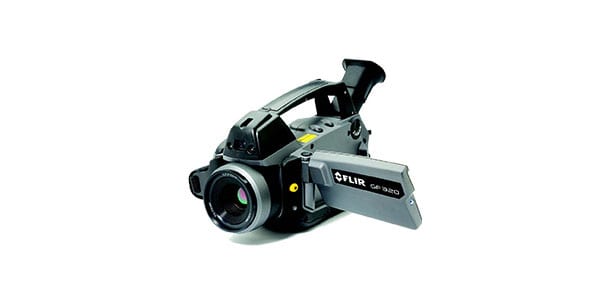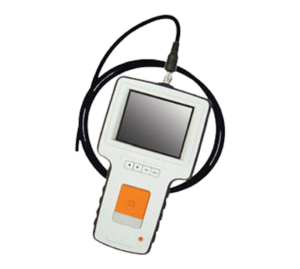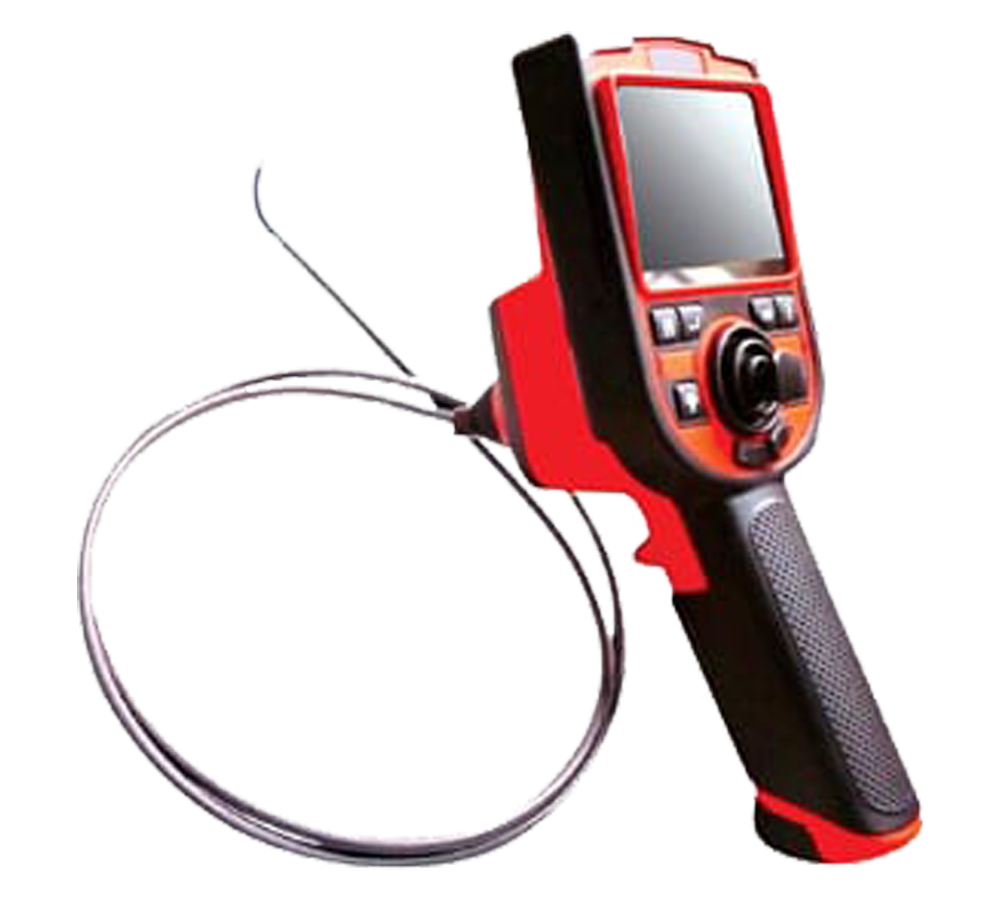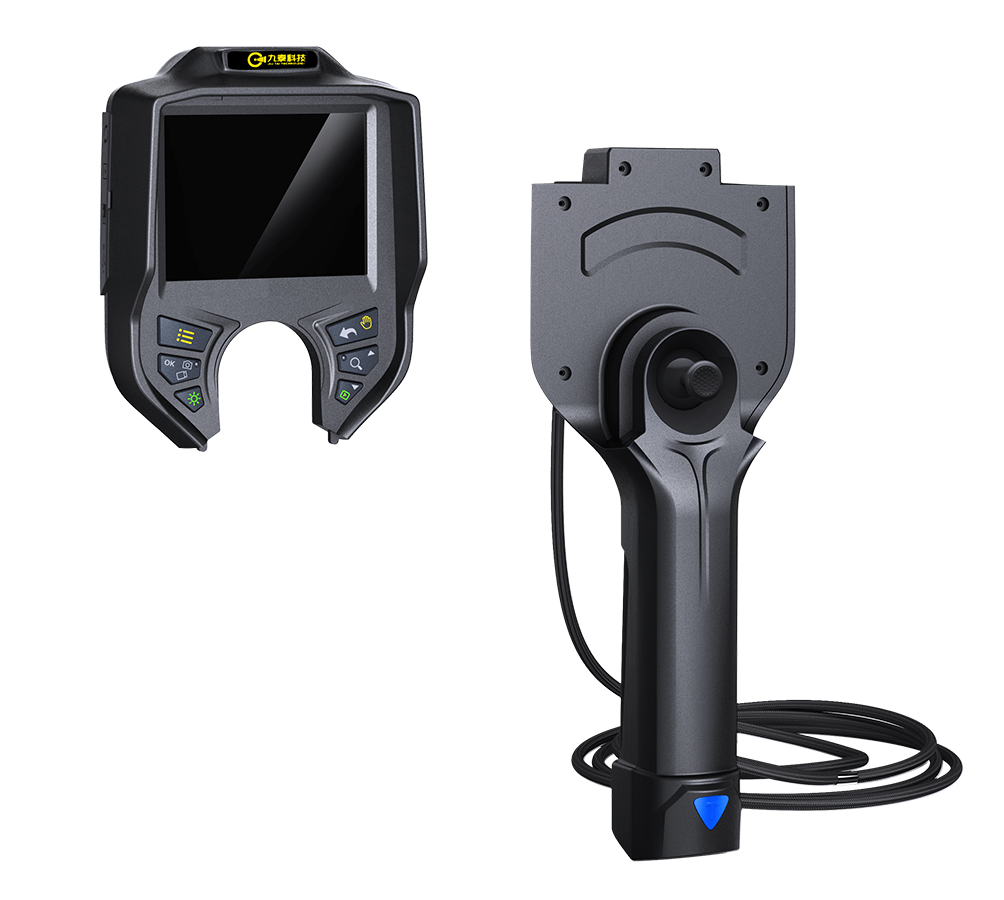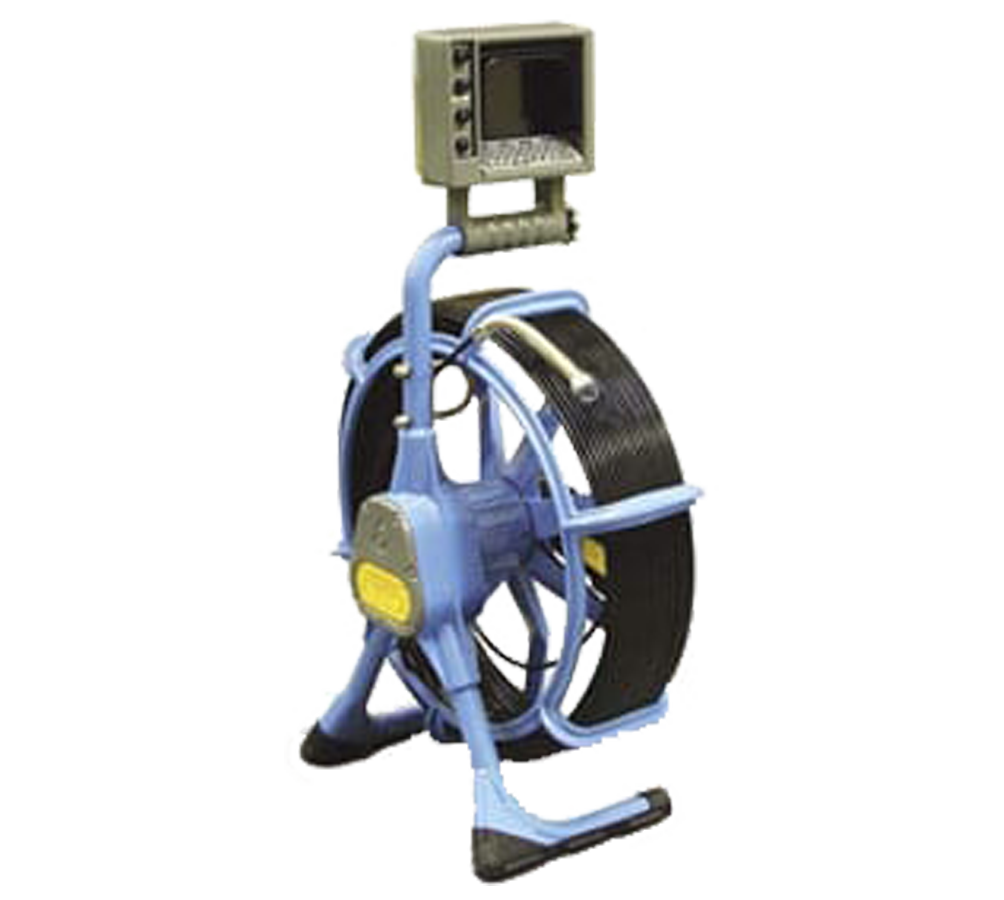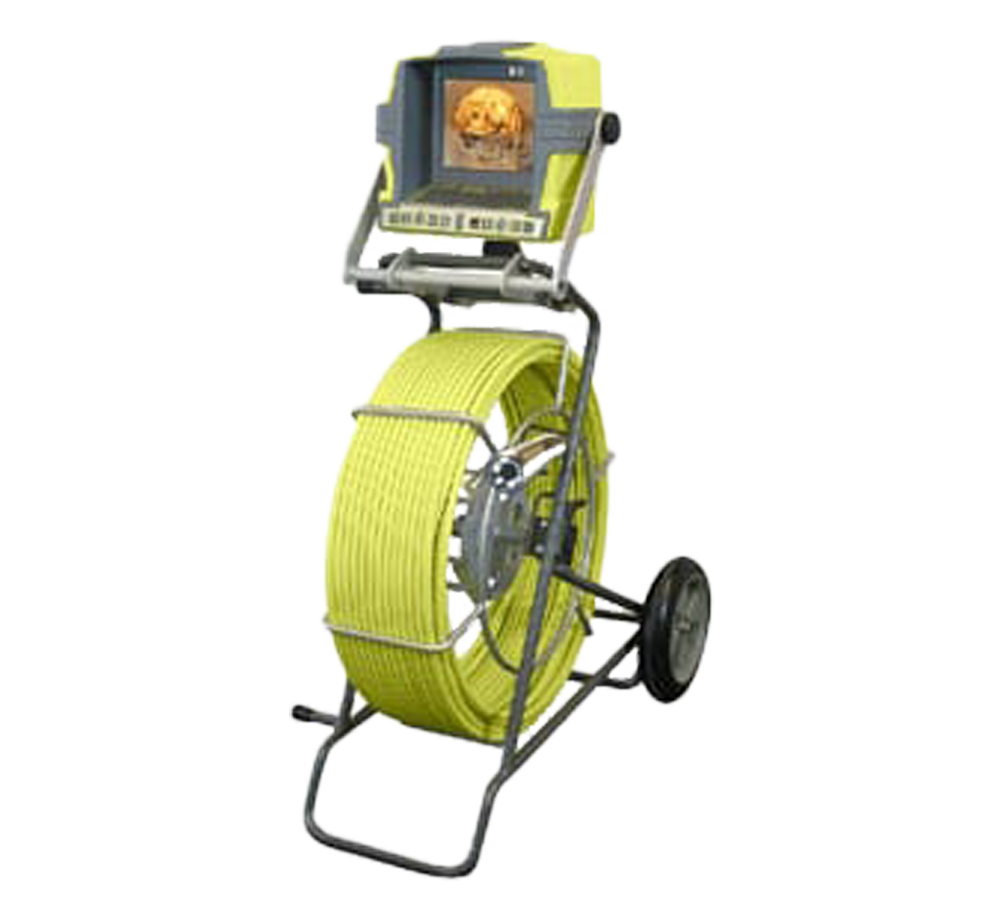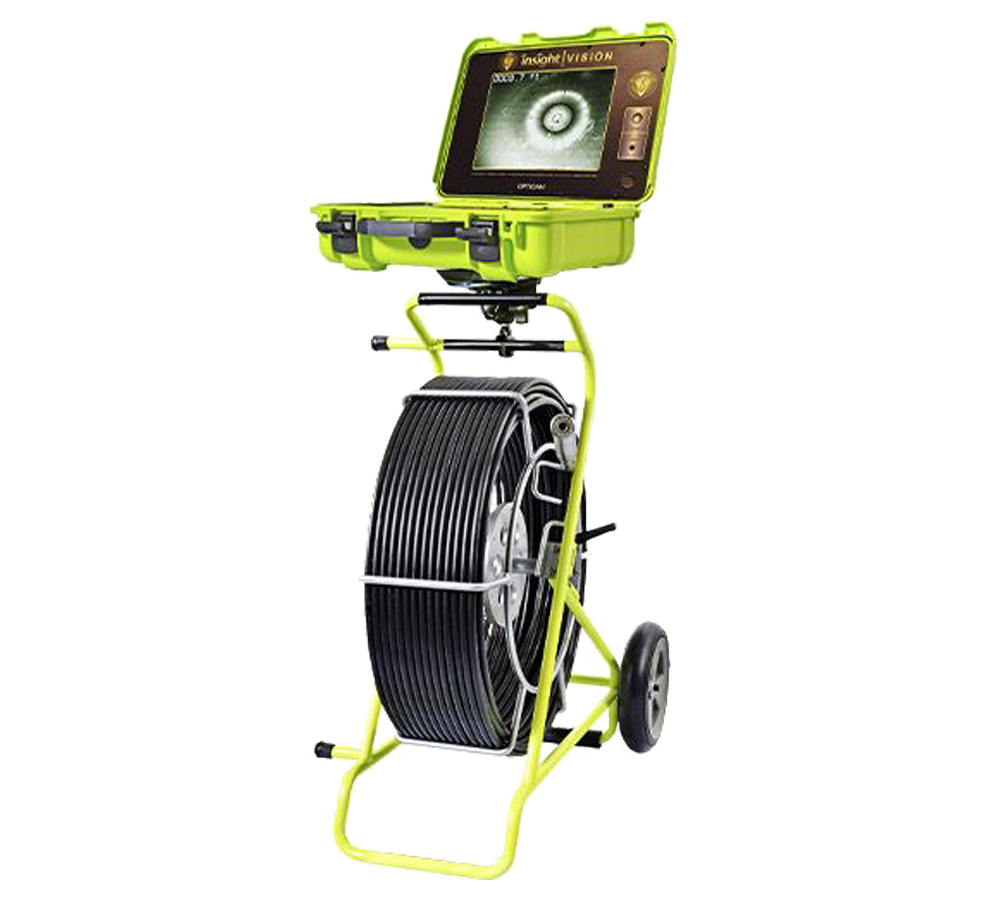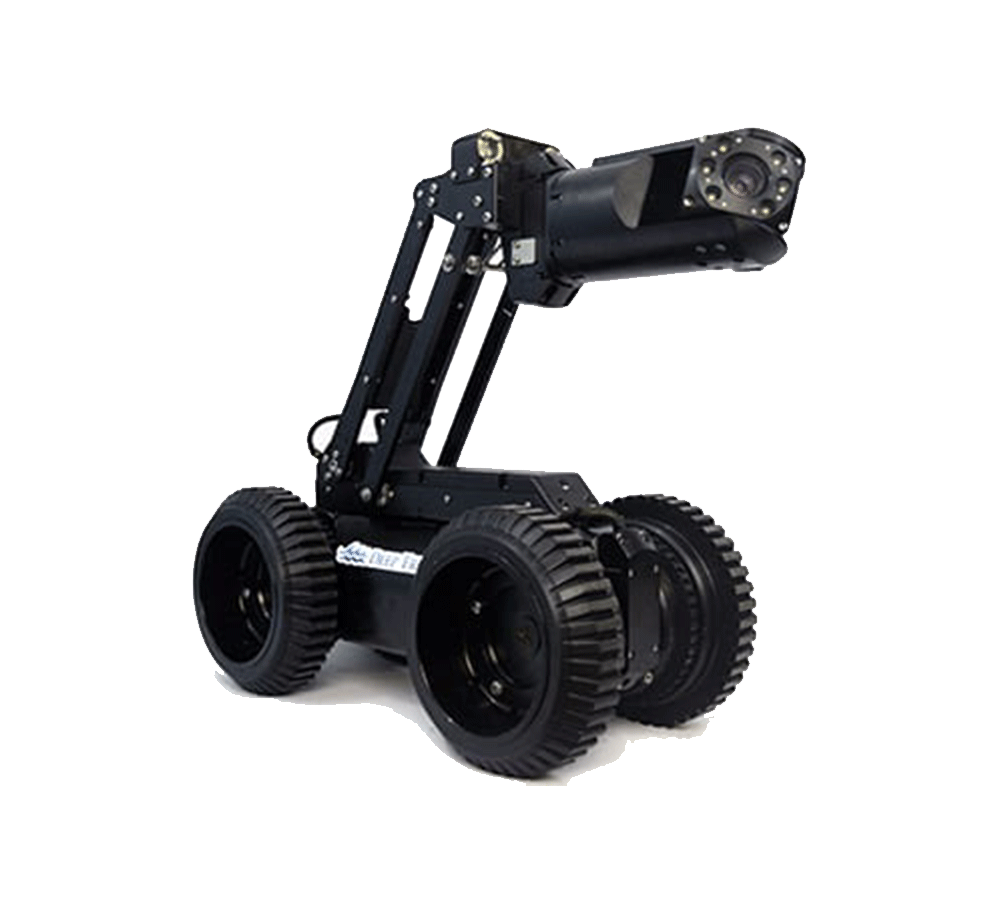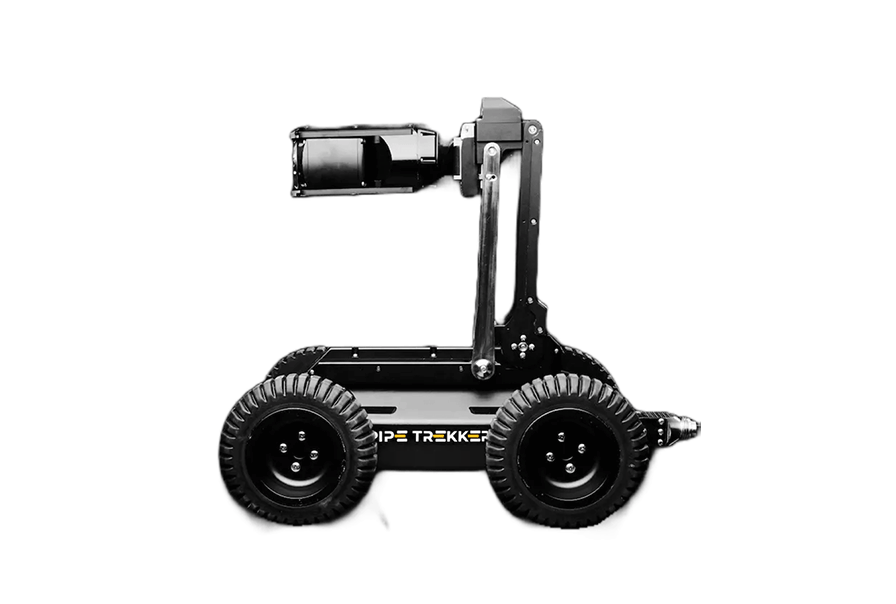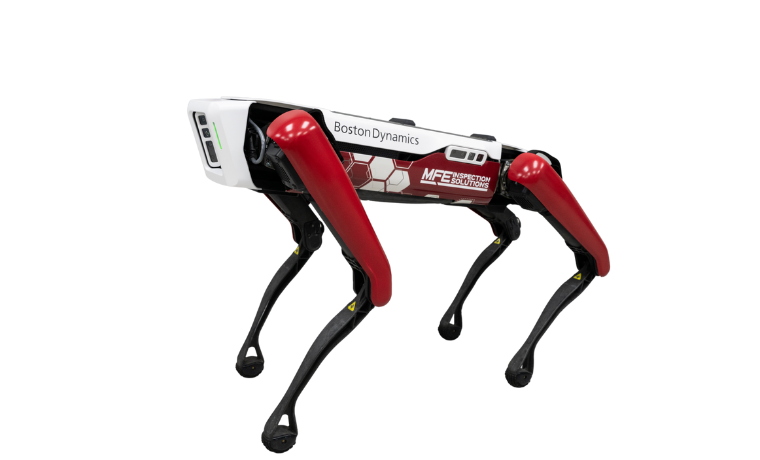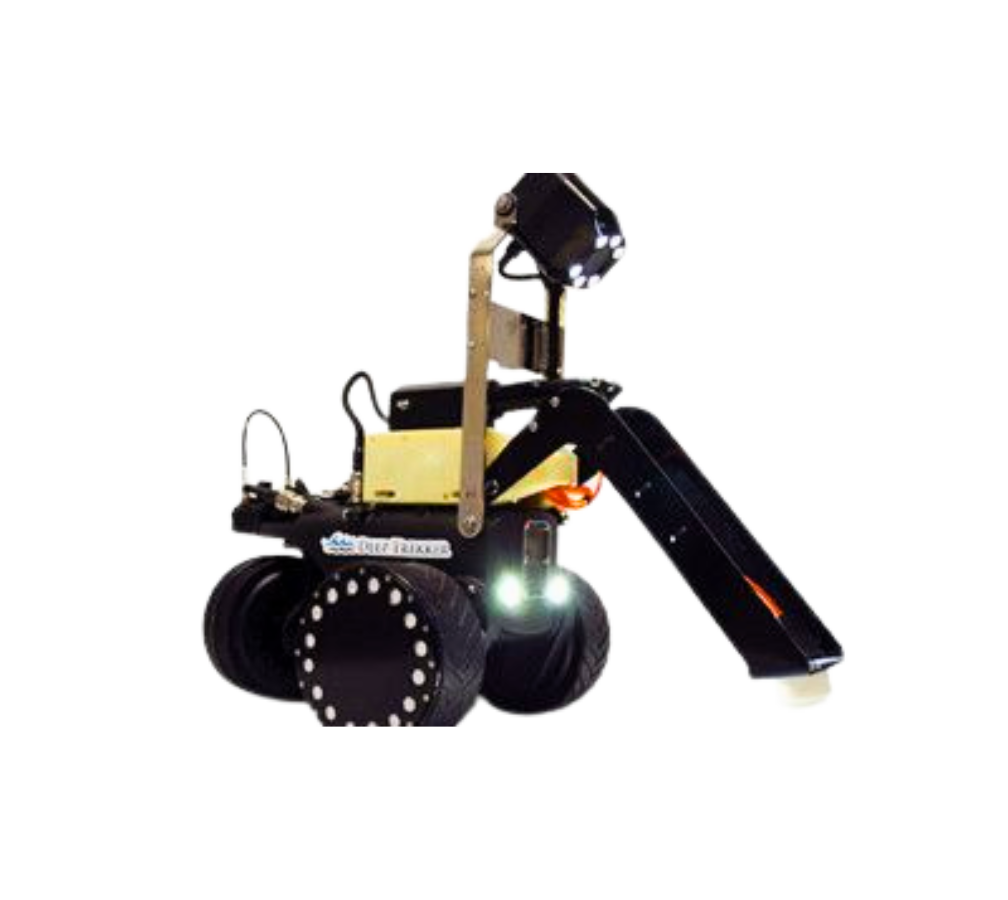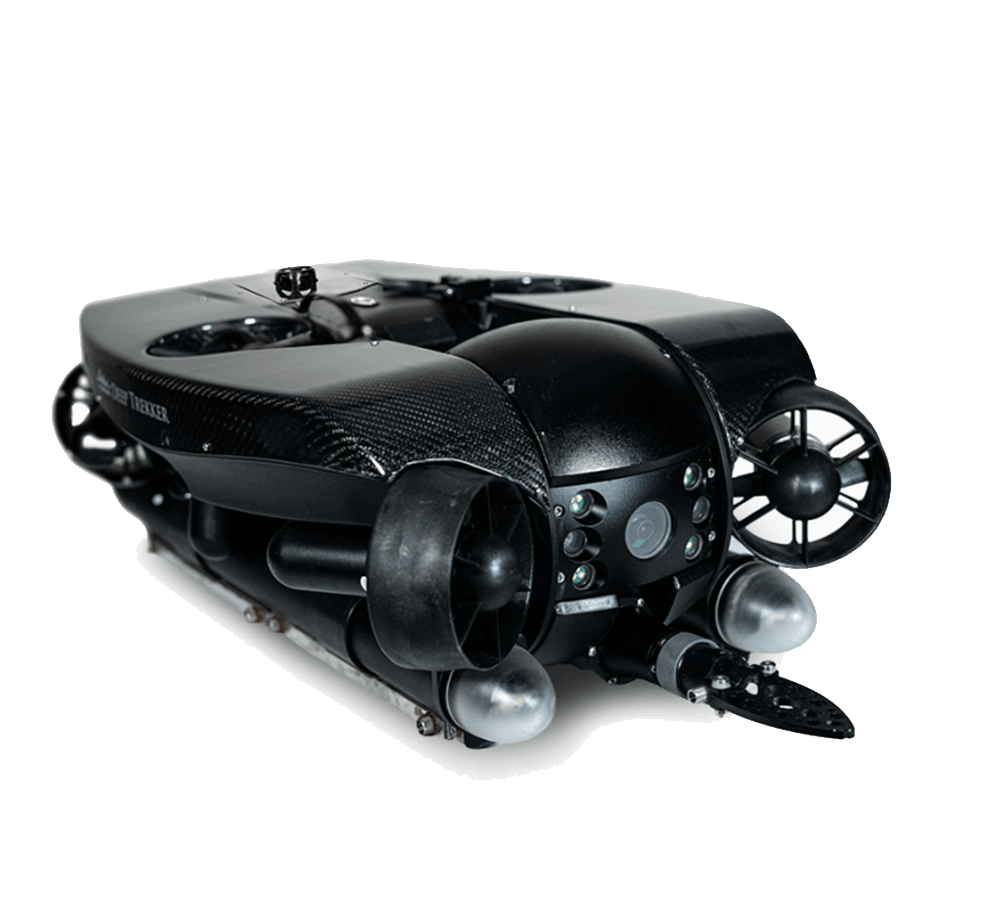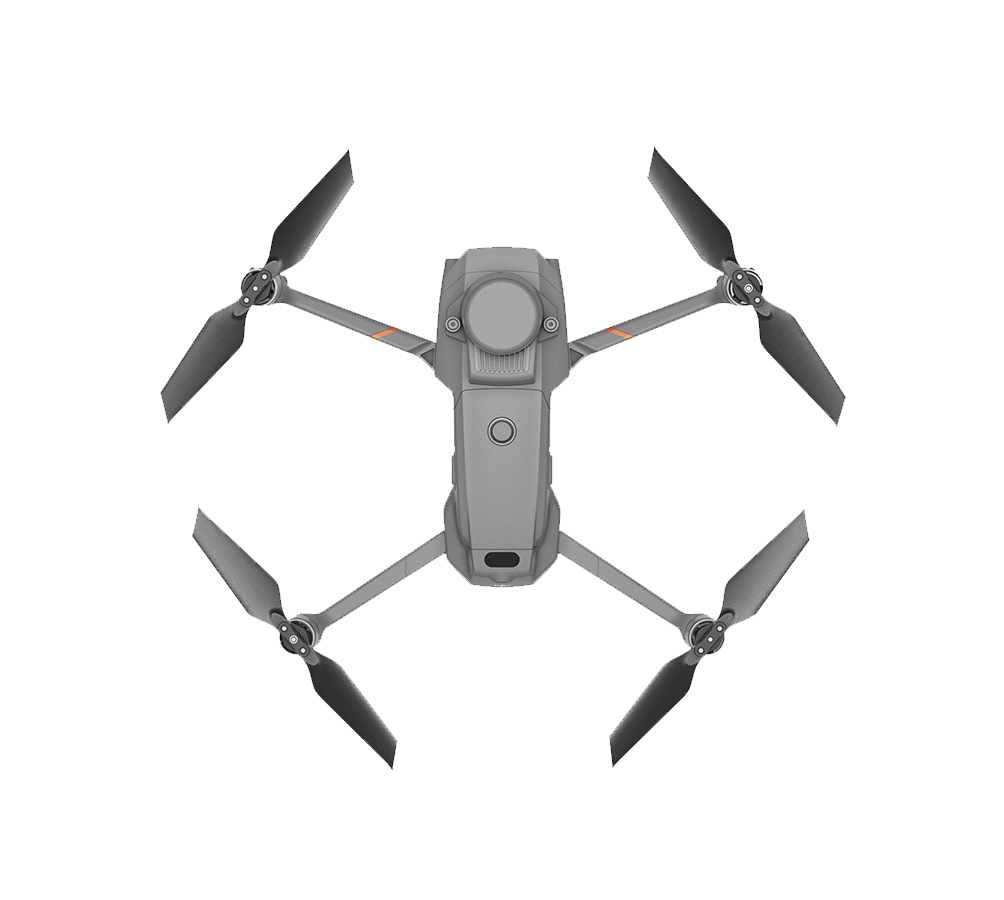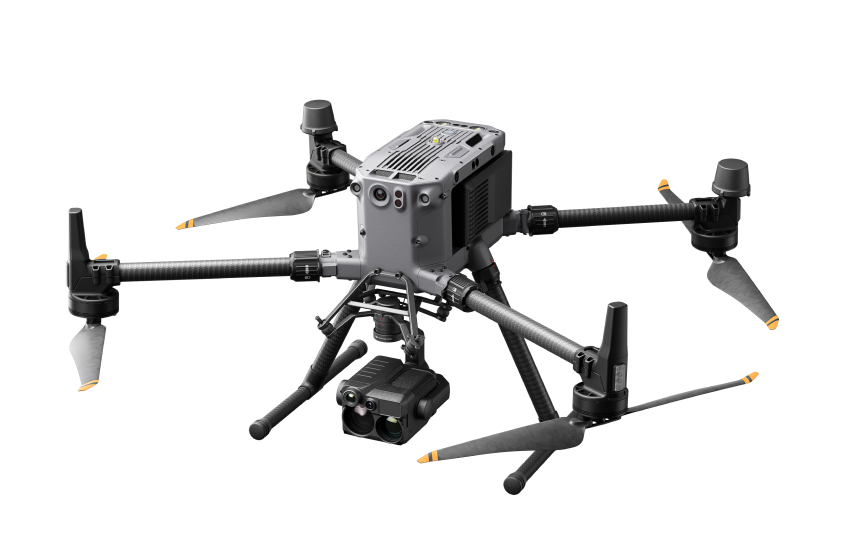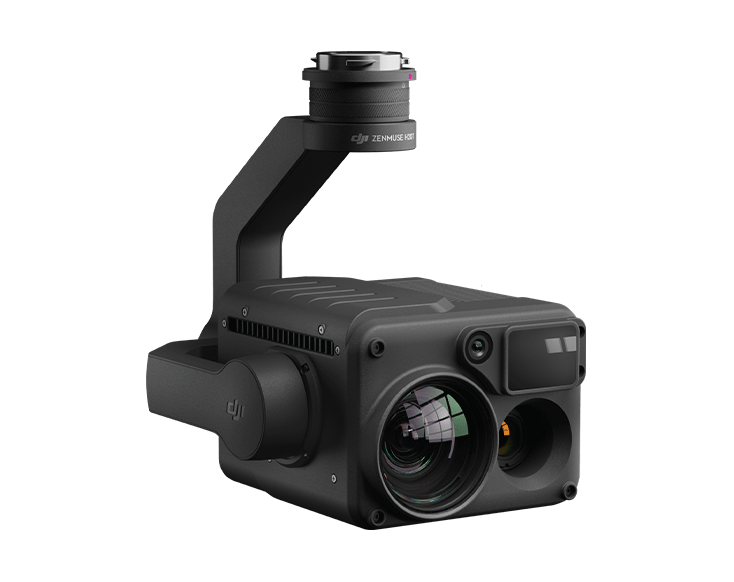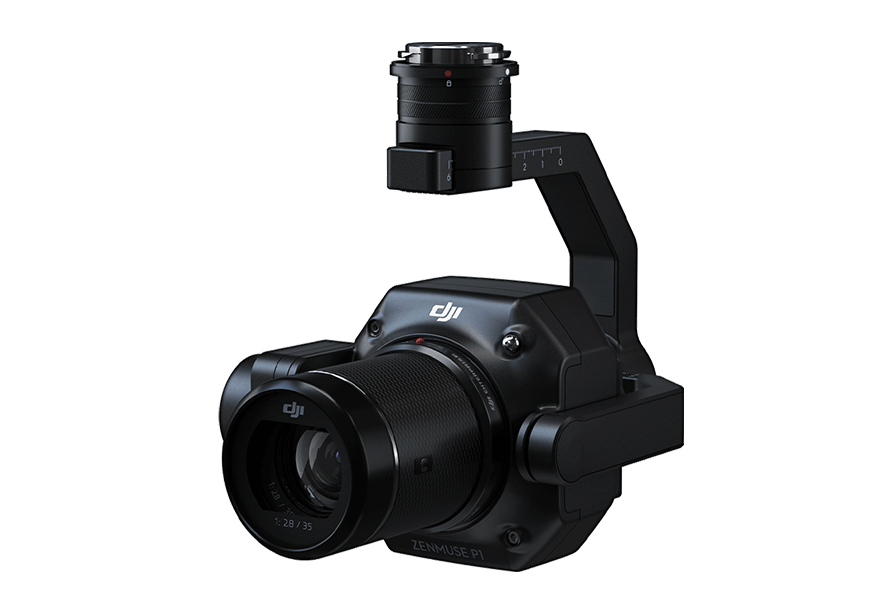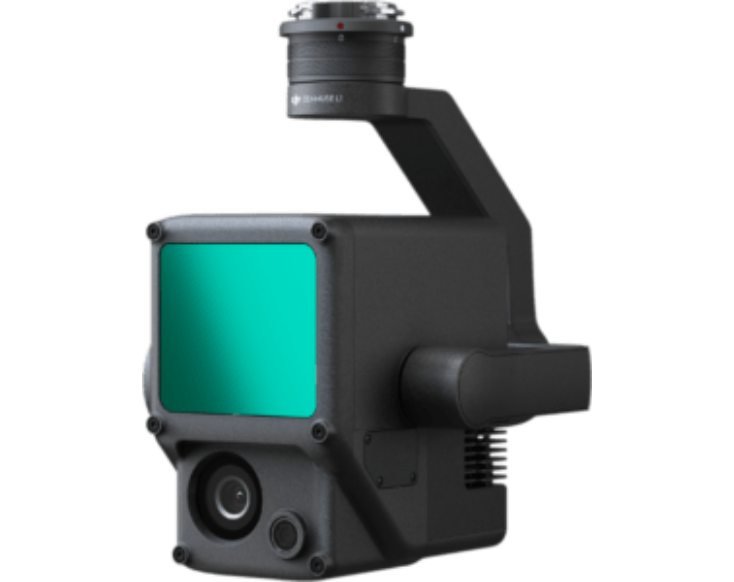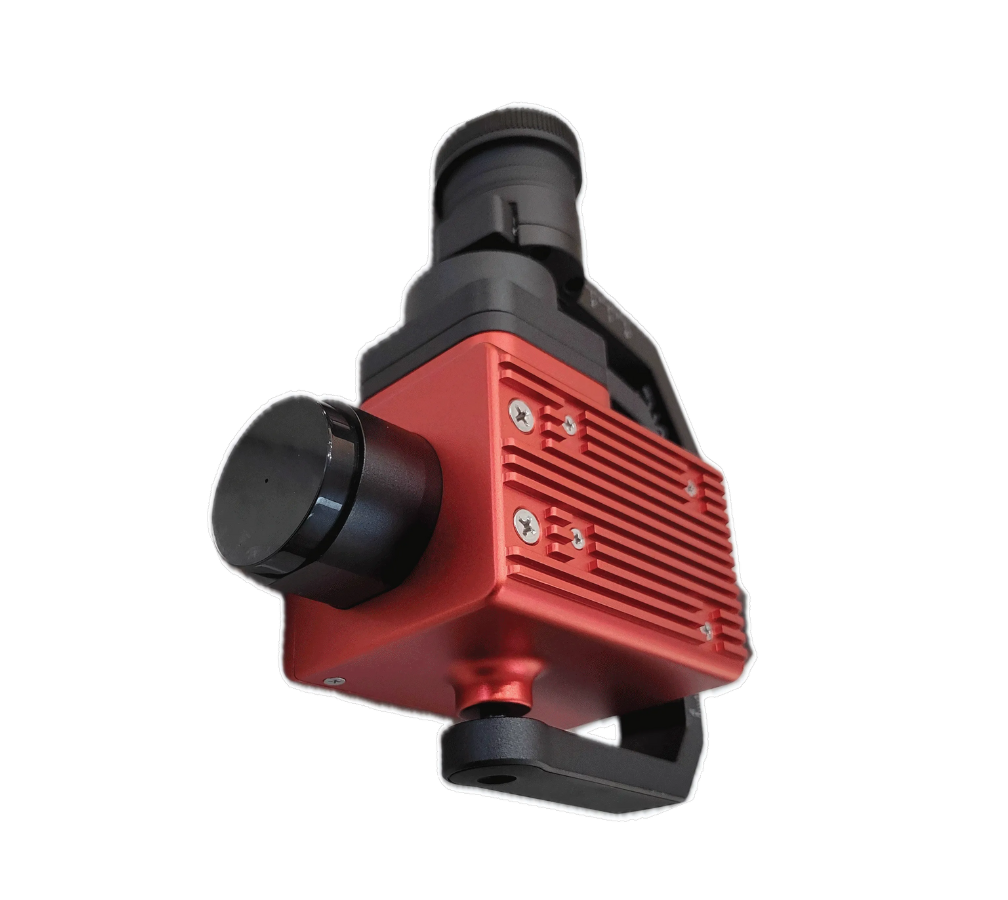
Guide
Inspection Cameras: An In-Depth Guide [New for 2025]
→ Jump to the best inspection cameras of 2025.
→ Jump to the best robotic systems that carry inspection cameras of 2025.
Other terms commonly used for inspection cameras include:
- Borescope
- Endoscope
- Snake camera
- Video scope
- Micro inspection camera
- Drain camera
- Pipe inspection camera
- Digital inspection camera
Whether it’s navigating the labyrinthine depths of sewer systems or peering into the heart of complex machinery, inspection cameras provide crucial insights that drive maintenance, safety, and quality assurance.
In this guide, we’ll delve into the world of inspection cameras, exploring their various types, key features, and applications across industries.
We’ll also share the top inspection cameras on the market and the top robotics systems made for carrying inspection cameras. Check out those sections if you’re looking for a specific type of inspection camera or robotics system, or use the menu on the right to jump to the information you’re looking for.
The Best Inspection Cameras for Rent and Sale [New for 2025]
Looking for an inspection camera?
Below you’ll find the top inspection cameras on the market right now.
pushHere’s the list of categories in case you’d like to jump around:
- Acoustic imagers
- Infrared inspection cameras
- Optical gas imaging (OGI) cameras
- Borescopes & videoscopes
- Push cameras
1. Acoustic Imagers
Acoustic imagers detect sound waves to visualize and locate sound sources, leaks, and electrical discharges. They are crucial for predictive maintenance, quality control, and acoustic leak detection in general.
I. FLIR Si124 Acoustic Imaging Camera
The FLIR Si124 is a handheld acoustic imaging camera built for detecting pressurized leaks in compressed air systems and partial discharge in electrical systems.
With intuitive on-screen guidance and AI-driven analytics, this tool helps reduce energy waste and prevent equipment failure.
- 124-microphone array. Captures ultrasonic sound and converts it into a visual acoustic image.
- Real-time leak detection. Helps operators pinpoint pressurized gas leaks or partial discharge instantly.
- AI-enhanced diagnostics. Built-in software classifies discharge types and estimates leak cost savings.
Buy the FLIR Si124 acoustic imaging camera.
II. Crysound 2623 Acoustic Imager (Handheld)
The Crysound 2623 is a high-performance handheld acoustic imager designed for detecting and visualizing sound anomalies such as gas leaks and mechanical faults.
It delivers high-resolution acoustic maps and real-time analysis, making it an ideal choice for industrial maintenance, safety, and reliability programs.
- High-resolution acoustic mapping. Converts ultrasonic sound into clear, visual images.
- Real-time anomaly detection. Pinpoints leaks, friction, and mechanical issues as they occur.
- Portable and user-friendly. Lightweight and ergonomic design suited for extended use.
Buy the Crysound 2623 acoustic imager.
2. Infrared Inspection Cameras
Infrared cameras detect heat signatures, allowing for non-contact temperature measurement and thermal analysis. They are essential for detecting electrical faults, insulation issues, and mechanical wear.
I. FLIR E95 IR Camera
The FLIR E95 is a high-performance infrared camera built for professional thermographic inspections in electrical, mechanical, and building applications.
With a 464 × 348 thermal resolution, laser-assisted autofocus, and on-screen area measurement tools, the E95 helps users quickly detect and analyze thermal anomalies.
- High thermal resolution. Delivers sharp imagery with 464 × 348 detector resolution.
- Laser-assisted autofocus. Ensures fast, accurate focus for precise temperature readings.
- Advanced analytics. Includes on-screen area measurements and customizable thermal profiles.
II. FLIR E30
The FLIR E30 is a reliable entry-level infrared camera tailored for building diagnostics, electrical inspections, and mechanical troubleshooting.
It features a 160 × 120 thermal detector and an ergonomic design that makes it easy to use in the field. With accurate temperature measurement and intuitive controls, the E30 is a smart choice for professionals looking for dependable thermal performance without a steep learning curve.
- 160 × 120 IR resolution. Provides crisp thermal images for essential inspection tasks.
- Point-and-shoot simplicity. Designed for fast inspections with minimal setup.
- Lightweight and ergonomic. Comfortable to carry and operate in tight or elevated spaces.
III. FLIR T540 IR Camera
The FLIR T540 IR Camera is a premium thermal imaging solution designed for high-end industrial inspections where precision and flexibility are key.
It features a 464 × 348 thermal resolution, a rotating optical block for hard-to-reach areas, and laser-assisted autofocus. The T540 is ideal for thermographers who need advanced features and comfort during long inspection sessions.
- Rotating optical block. Enables flexible viewing angles without strain.
- High-resolution imaging. Captures detailed thermal data with a 464 × 348 IR detector.
- Touchscreen interface. Intuitive and responsive controls for easy navigation and analysis.
3. Optical Gas Imaging (OGI) Cameras
OGI cameras visualize gas leaks that are invisible to the naked eye, enhancing safety and reducing environmental impact in the oil and gas industry.
I. MFE Detect LW OGI Camera
The MFE Detect LW is the first-ever long-wave, uncooled OGI camera that meets EPA Quad OA requirements and can be mounted on a drone.
Built for methane detection, the Detect LW combines advanced sensor technology with AI-powered leak detection software for fast, scalable emissions monitoring. Its compact design and cost-efficient performance make it a breakthrough solution for environmental compliance in the oil and gas industry.
- EPA-compliant. Meets Quad OA standards for 60 g/hr at 120 feet methane detection.
- Drone-ready. Lightweight enough for aerial inspections via DJI Matrice drones.
- AI-powered leak detection. Software automates leak identification and analysis.
Buy the MFE Detect LW OGI camera.
II. MFE Detect MW (MFE OGI Camera)
The MFE Detect MW OGI camera is a lightweight, high-sensitivity optical gas imaging system designed for drone-based inspections.
Engineered for aerial deployment, it enables real-time methane detection in hard-to-reach or hazardous areas. Compatible with DJI drones, it allows teams to conduct wide-area leak detection from a safe distance—ideal for oil and gas applications.
- Drone-compatible. Designed to integrate with DJI drones like the Matrice 300 and 350.
- Handheld option. This versatile model can be used by hand or as a payload on a quadruped like Boston Dynamics’ Spot.
- Methane-focused detection. Optimized for detecting methane gas emissions in industrial settings.
- Real-time analysis. Transmits live visual data for immediate review and response.
Buy the MFE Detect MW (MFE OGI camera).
III. FLIR GF320
The FLIR GF320 is a proven industry-standard optical gas imaging camera designed for detecting hydrocarbon and volatile organic compound (VOC) emissions.
With its cooled infrared detector and thermal sensitivity, the GF320 visualizes gas leaks invisible to the naked eye, helping operators quickly locate and repair emissions. Its ergonomic design and onboard recording capabilities make it ideal for refinery, pipeline, and processing plant inspections.
- Cooled detector. Offers high sensitivity to small gas leaks, even at a distance.
- Onboard video recording. Capture and document inspections directly on the device.
- VOC detection. Detects a wide range of hydrocarbons and industrial gases.
4. Borescopes & Videoscopes
Borescopes and videoscopes allow for visual inspection of hard-to-reach areas, such as inside engines, pipes, and machinery.
I. MFE Series Videoscope System
The MFE Series Videoscope System is a high-performance industrial inspection tool designed for visual access in difficult-to-reach areas.
Equipped with dual-view cameras and a robust, ergonomic build, this videoscope is ideal for inspections in aerospace, power generation, and mechanical maintenance.
- Dual-view camera system. Offers both forward and side views for comprehensive inspections.
- Touchscreen display. Large, high-resolution display for real-time viewing and navigation.
- Rugged design. Built for durability in challenging industrial environments.
Buy the MFE Series videoscope system.
II. MFE Series 4-Way Articulating Scope
The MFE Series 4-Way Articulating Scope is engineered for precision inspections in tight or curved pathways where maneuverability is key.
Featuring 4-way articulation, this scope allows users to navigate complex inspection routes with ease. It is widely used in industries like aviation, automotive, and petrochemical for inspecting turbines, engines, and other confined equipment.
- 4-way articulation. Provides complete control and visibility in confined spaces.
- Compact probe. Easily fits into narrow areas for internal inspections.
- Bright LED lighting. Ensures high visibility in dark or obstructed spaces.
Buy the MFE Series 4-Way articulating scope.
III. MFE Intelligent Series (Dellonscope) Borescope
The MFE Intelligent Series (Dellonscope) Borescope is a cutting-edge videoscope designed for advanced visual inspections.
Featuring dual high-resolution cameras, it provides clear imagery in challenging environments, making it ideal for inspecting pipes, turbines, and other hard-to-reach areas.
- Dual HD cameras. Provides high-resolution images for precise inspections.
- Touchscreen interface. Easy-to-use interface for seamless navigation and control.
- Portable design. Lightweight and durable, built for field use.
Buy the MFE Intelligent Series (Dellonscope) borescope.
5. Push Camera Systems
Push camera systems are used for inspecting pipes and sewer lines, providing real-time video feedback for identifying blockages and damages.
I. Pearpoint P374 IS
The Pearpoint P374 IS is an intrinsically safe pushrod camera inspection system designed for hazardous environments such as vessels and pipelines.
The system features a built-in keyboard, an accurate footage counter displayed on a 4.6” high-resolution LCD screen, and the ability to connect the video feed to an external recorder or monitor. It is ideal for use in chemical and petrochemical industries, as well as landfill and natural gas applications.
- Intrinsically safe design. Suitable for hazardous environments.
- Compact and portable. Weighs 46 lbs and operates on 12V DC power.
- Integrated keyboard and footage counter. Enhances inspection efficiency.
II. Insight Vision VuTEK Series
The Insight Vision VuTEK Series is an advanced push camera system designed for efficient pipeline inspections ranging from 2″ to 12″ in diameter.
Featuring a lightweight, detachable command module made of polyethylene and equipped with wheels for easy transport, it offers portability and ease of use.
- Versatile inspection capability. Suitable for 2″ to 12″ pipelines.
- High-resolution display. 8.4″ color LCD monitor for clear visuals.
- Portable design. Wheels and detachable command module for easy transport.
Buy or Rent the Insight Vision VuTEK Series.
III. Insight Vision Opticam
The Insight Vision Opticam is a user-friendly sewer inspection camera system designed to quickly locate and identify obstructions, blockages, and leakages in pipelines.
The system offers one-touch recording directly to a USB stick, Wi-Fi streaming to mobile devices, and built-in audio for recording and communication. Its premium push rod cable with Flexi-Guard Spring allows navigation through bends and obstacles.
- High-quality imaging. 10.4″ LCD screen with self-leveling camera options.
- Integrated location tracking. 512Hz sonde for accurate positioning.
- Advanced recording features. USB recording, Wi-Fi streaming, and audio capabilities.
The Best Robotics Systems that Carry Inspection Cameras [New for 2025]
Looking for a robotics system to carry an inspection camera?
Below you’ll find the top robotics systems on the market right now, covering systems that operate in the water, on land, and in the air (i.e., drones).
Here’s the list of categories in case you’d like to jump around:
Crawler Inspection Systems
Crawler robots are ground-based robotics systems that provide remote access for inspection cameras, enabling thorough evaluations in challenging environments.
I. Deep Trekker Pipe Crawler
The Deep Trekker DT340X Pipe Crawler is a robust, battery-operated inspection system designed for municipal and industrial pipeline assessments.
Equipped with a 400m (1,312 ft) tether, it allows for extensive reach into pipelines, enabling thorough inspections without the need for external power sources. Its steerable wheels and depth rating of up to 50 meters make it versatile for various pipeline conditions.
- Extended reach. 400m tether facilitates deep pipeline inspections.
- Battery-powered. Operates without external power, enhancing portability.
- Steerable wheels. Provides maneuverability in complex pipeline layouts.
Buy or Rent the Deep Trekker DT340X Pipe Crawler.
II. Deep Trekker DT320 Mini Pipe Crawler
The Deep Trekker DT320 Mini Pipe Crawler is a compact, battery-operated system ideal for inspecting pipes ranging from 6 to 12 inches in diameter.
Featuring a 200m (656 ft) tether and a handheld controller, it offers ease of deployment and operation. Its compatibility with DT340 accessories enhances its adaptability for various inspection needs.
- Compact design. Suitable for small-diameter pipe inspections.
- 200m tether. Enables substantial reach within pipelines.
- Accessory compatibility. Works with DT340 accessories for expanded functionality.
Rent the Deep Trekker DT320 Mini Pipe Crawler.
III. Pipe Trekker A-200S
The Pipe Trekker A-200S is a versatile pipe inspection crawler designed for larger diameter pipes, starting from 8 inches and up.
Equipped with a 7-inch LCD handheld controller and a 650-foot tether, it provides a user-friendly interface and extensive reach for thorough inspections. Optional carbide wheel kits and wheel spacers enhance its adaptability to various pipe materials and diameters.
- Large pipe compatibility. Suitable for pipes 8 inches and larger.
- 650-foot tether. Allows for deep pipeline exploration.
- Customizable. Optional wheel kits and spacers for varied conditions.
Buy or Rent the Pipe Trekker A-200S.
IV. Boston Dynamics Spot
The Boston Dynamics Spot is a versatile quadruped robot designed for dynamic inspection and data collection tasks.
Spot navigates difficult terrain with ease, offers various payload options, and is equipped with advanced sensors for real-time data acquisition. Its adaptability and robustness make it suitable for diverse industrial applications.
- Dynamic navigation. Capable of traversing rough terrains and climbing stairs.
- Payload versatility. Supports various sensors and equipment for customized tasks.
- Remote operation. Controlled via an intuitive tablet interface or programmable API.
Buy or rent the Boston Dynamics Spot.
V. Deep Trekker DT640 Utility Crawler
The Deep Trekker DT640 Utility Crawler is designed for inspecting confined spaces and pipelines.
The DT640 features a rugged build, high-definition camera, and modular design for various inspection tasks. This utility crawler provides clear visuals and reliable performance in challenging inspection environments.
- Rugged construction. Built to withstand harsh industrial conditions.
- High-definition imaging. Equipped with a camera that delivers clear visuals.
- Modular design. Adaptable to different inspection requirements with various attachments.
Buy or rent the Deep Trekker DT640 Utility Crawler.
ROV Inspection Systems
Underwater ROV systems are designed for submerged inspections, providing real-time video and data from underwater environments.
I. QYSEA FIFISH V6 Underwater ROV
The QYSEA FIFISH V6 is a compact underwater remotely operated vehicle (ROV) designed for videography and inspection tasks.
With 360° omnidirectional maneuverability and a depth rating of 100 meters, the FIFISH V6 offers exceptional underwater stability and image quality. Equipped with a 4K UHD camera, 4000-lumen LEDs, and posture lock, it ensures clear and precise underwater footage even in low-light conditions.
- Omnidirectional movement. 6 degrees of freedom for complete underwater navigation.
- High-quality imaging. 4K UHD camera with a 166° field of view.
- Enhanced lighting. 4000-lumen LED lights for improved visibility.
Buy or rent the QYSEA FIFISH V6.
II. QYSEA FIFISH V-EVO Underwater ROV
The QYSEA FIFISH V-EVO is a versatile underwater drone built for detailed exploration and practical underwater tasks.
Featuring 360° movement and low-light capabilities, the FIFISH V-EVO is ideal for capturing stunning visuals and conducting thorough inspections. Its advanced tools for gripping and retrieval enhance both professional and recreational underwater experiences.
- Ultra HD imaging. 4K video at 60 FPS with a 166° ultra-wide lens.
- Powerful lighting. Dual 5000-lumen LEDs for clear visibility in dark environments.
- AI vision lock. Smart tracking to maintain focus on subjects during movement.
Buy or rent the QYSEA FIFISH V-EVO.
III. Deep Trekker REVOLUTION ROV
The Deep Trekker REVOLUTION ROV is a highly maneuverable underwater remotely operated vehicle designed for complex inspections and surveys.
Featuring a 260-degree revolving head equipped with an ultra-high-definition camera, powerful LED floodlights, and a laser scaler, the REVOLUTION allows operators to adjust the angle of key attachments for optimal positioning during various tasks.
- Revolving camera head. 260-degree rotation enables flexible viewing angles for comprehensive inspections.
- Advanced thruster system. Six thrusters offer enhanced maneuverability and stability in currents.
- Durable construction. Built with carbon fiber, anodized aluminum, and stainless steel for longevity in harsh environments.
Buy or rent the Deep Trekker REVOLUTION.
Drone Inspection Systems
Inspection drones are designed for aerial inspections in various industrial and environmental settings.
I. Skydio X10
The Skydio X10 is an advanced commercial drone that integrates AI-powered obstacle avoidance with high-resolution imaging capabilities, making it ideal for detailed inspections and aerial data collection.
Equipped with an onboard NVIDIA Jetson Orin GPU, the X10 can execute complex, automated missions in challenging environments, including low-light and adverse weather conditions. Its modular camera system offers both wide and telephoto lenses, as well as a radiometric thermal camera, ensuring comprehensive data capture for various applications.
- AI-powered obstacle avoidance. Enables autonomous navigation through complex environments.
- High-resolution imaging. Features 64 MP narrow and 50 MP wide cameras for detailed data capture.
- Versatile sensor options. Includes thermal imaging and up to 60x zoom capabilities for diverse inspection needs.
II. Flyability Elios 3
The Flyability Elios 3 is a state-of-the-art indoor drone designed for confined space inspections and 3D mapping, combining LiDAR technology with high-resolution imaging to navigate complex environments safely.
Featuring a modular payload bay and real-time 3D mapping capabilities, the Elios 3 enhances situational awareness and simplifies data collection in areas that are hazardous or difficult to access.
- Real-time 3D mapping. Utilizes LiDAR technology to create accurate maps during flight.
- Collision-tolerant design. Allows safe navigation in confined and complex environments.
- Modular payload bay. Supports various sensors and tools for customized inspection tasks.
Buy or rent the Flyability Elios 3.
III. DJI Mavic 3 Enterprise Series
With a high-resolution 20 MP camera and advanced flight performance, the Mavic 3 Enterprise helps inspectors with efficient data collection for infrastructure monitoring, asset inspections, and aerial surveys.
- High-resolution imaging. 20 MP camera with mechanical shutter for precise data capture.
- Extended flight time. Up to 45 minutes, allowing comprehensive coverage of large areas.
- RTK module. Provides centimeter-level positioning accuracy for surveying tasks.
Buy or rent the DJI Mavic 3 Enterprise Series.
IV. DJI Matrice 350 RTK
With a maximum flight time of 55 minutes and an IP55 protection rating, the Matrice 350 RTK is designed to perform in challenging environments.
Its six-directional sensing and positioning system, along with a night-vision FPV camera, ensures safe and reliable operations during complex missions.
- Extended flight duration. Up to 55 minutes for prolonged operations.
- Robust build. IP55-rated for resistance against dust and water.
- Advanced safety features. Includes six-directional sensing and night-vision capabilities.
Buy or Rent the DJI Matrice 350 RTK.
Drone Inspection Payloads
Drone inspection payloads are specialized cameras and sensors designed for integration with drones, enabling aerial inspections and data collection.
The data they collect can be stored natively on the drone, or transmitted in real-time to a remote operator or cloud-based platform for immediate analysis and review.
I. DJI Zenmuse H20T SP Plus
The DJI Zenmuse H20T SP Plus is a versatile quad-sensor payload designed for advanced aerial inspections and data collection.
The H20T SP Plus enhances mission efficiency by providing multiple perspectives and data types simultaneously, making it ideal for applications in public safety, infrastructure inspection, and environmental monitoring.
- Multi-sensor integration. Combines zoom, wide-angle, thermal imaging, and laser rangefinder for comprehensive data capture.
- High-resolution imaging. 20 MP zoom and 12 MP wide-angle cameras deliver detailed visual data.
- Thermal imaging. Radiometric thermal camera detects temperature variations for effective inspections.
Buy or rent the DJI Zenmuse H20T SP Plus.
II. DJI Zenmuse P1
The DJI Zenmuse P1 integrates a full-frame sensor with interchangeable fixed-focus lenses on a 3-axis stabilized gimbal.
Designed specifically for photogrammetry missions, the P1 is an ideal solution for topographic mapping, 3D modeling, and land surveying applications.
- High-resolution sensor. 45 MP full-frame sensor captures detailed imagery for precise mapping.
- Global mechanical shutter. Enables shutter speeds up to 1/2000 seconds, reducing motion blur.
- Efficient data collection. Covers large areas quickly, enhancing productivity in surveying tasks.
Buy or rent the DJI Zenmuse P1.
III. DJI Zenmuse L1 (NA)
The DJI Zenmuse L1 (NA) integrates a LiDAR module, a high-accuracy IMU, and a camera with a 1″ CMOS sensor on a 3-axis stabilized gimbal, providing real-time 3D data acquisition for aerial surveying and mapping.
When paired with the DJI Matrice 300 RTK and DJI Terra, the L1 forms a comprehensive solution capable of capturing detailed 3D models and point clouds with centimeter-level accuracy.
- Integrated LiDAR system. Provides accurate 3D data collection with real-time point cloud visualization.
- High-precision IMU. Ensures data accuracy and reliability in various environmental conditions.
- Versatile applications. Suitable for topographic mapping, power line inspection, and forestry management.
Buy or rent the DJI Zenmuse L1.
IV. MFE Detect LW
The MFE Detect LW is an innovative, EPA-compliant long-wave infrared (LWIR) optical gas imaging (OGI) camera designed for efficient methane leak detection.
The Detect LW can be mounted on the DJI Matrice 300 and the 350, enabling rapid aerial inspections of pipelines, storage tanks, and other infrastructure.
- Regulatory compliance. Meets EPA OOOOa standards for methane detection, supporting environmental compliance efforts.
- Advanced gas detection. Visualizes methane leaks in real-time using LWIR technology.
- Drone compatibility. Seamlessly integrates with DJI Matrice 300 and 350 for aerial inspections.
What Are Inspection Cameras?
Inspection cameras are specialized imaging devices designed to capture visual or other sensory data in environments that are difficult, dangerous, or impossible for direct human observation.
They range from simple handheld devices to sophisticated robotic systems equipped with high-resolution cameras, thermal imagers, and other sensors.
These tools enable professionals to inspect and assess the condition of assets, structures, and systems without physical access.
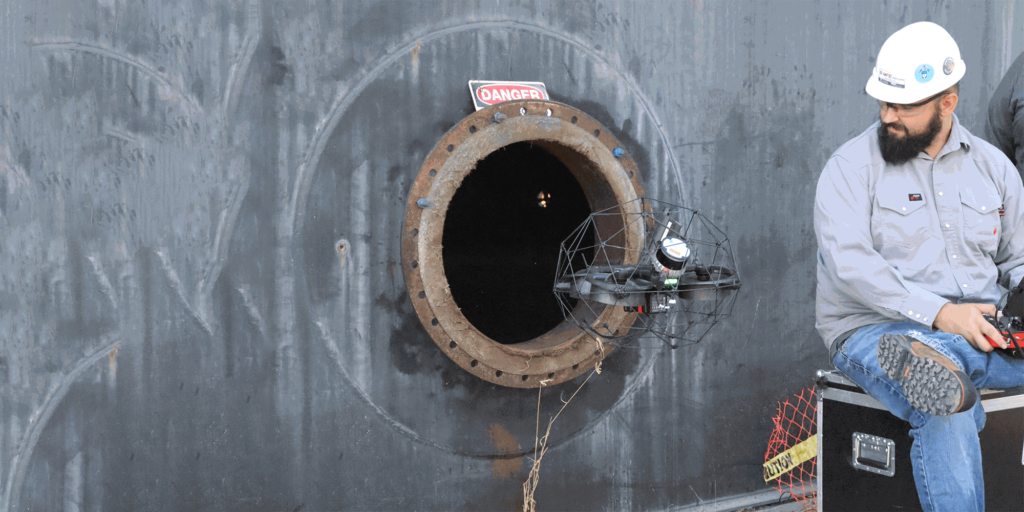
How Are Inspection Cameras Used?
Inspection cameras play a crucial role in maintaining safety, efficiency, and quality across numerous industries.
Their applications include:
- Preventive maintenance. Detecting potential issues before they lead to costly failures or downtime.
- Quality assurance. Ensuring products and structures meet required standards and specifications.
- Safety inspections. Assessing hazardous environments without risking human safety.
- Remote diagnostics. Troubleshooting and diagnosing problems in hard-to-reach or confined spaces.
- Compliance and documentation. Providing visual records for regulatory compliance and reporting.
By providing detailed visual data, inspection cameras empower professionals to make informed decisions, optimize operations, and enhance overall safety.
What Types of Data Do Inspection Cameras Collect?
Inspection cameras can collect a wide range of data types depending on their design and integrated technologies. Here is a list of the most common types of data they can capture:
- Visual data. The most basic and widely used type, captured for identifying defects, irregularities, or conducting diagnostics in various environments.
- Thermal data. Captured using thermal imaging sensors to detect heat patterns, energy loss, overheating, or smoldering fires.
- Gas data. Some cameras are equipped with gas sensors to detect hazardous gases or leaks in confined spaces.
- LiDAR data. Cameras with LiDAR sensors measure distance and depth, enabling 3D mapping, object profiling, and environmental scanning.
- 3D data. Using stereo imaging or laser displacement systems, these cameras create 3D models for applications like defect detection, volume measurement, and robotic guidance.
- Infrared data. Infrared cameras allow inspections in low-light or dark environments by detecting infrared radiation.
- Microscopic data. High-magnification cameras collect detailed microscopic measurements for quality control and diagnostics.
- Line scan data. Captures continuous spans of materials (e.g., textiles or metal) for high-resolution defect detection.
- Area scan data. Captures broader images at once for analyzing stationary objects or paused conveyor systems.
Types of Inspection Cameras
As you saw above, there is a wide range of inspection cameras, each designed to meet specific inspection needs across diverse industries.
Understanding the different types and their applications is crucial for selecting the right tool for the job.
Here are the main types of inspection cameras.
1. Visual Inspection Cameras
Visual inspection cameras are the most common type, used for general-purpose inspections where direct visual data is required. They range from simple handheld devices to advanced digital systems.
- Handheld inspection cameras. Portable and easy-to-use, ideal for quick inspections and capturing visual data in accessible areas.
- Digital inspection cameras. Offer higher resolution and advanced features, allowing for detailed image and video capture.
These cameras play a vital role in general visual inspections, providing clear and accurate visual data for assessing the condition of assets and structures.
2. Sewer Inspection Cameras
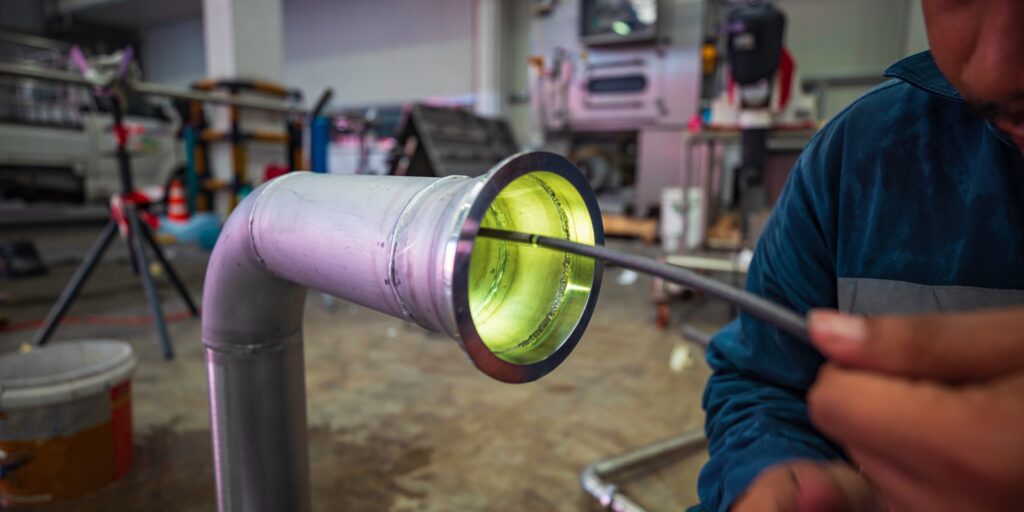
Sewer inspection cameras are a specialized visual camera designed for pipeline and sewer inspections.
They are crucial for identifying blockages, damages, and other issues within these systems.
Key features to look for include durability, sufficient cable length, and adequate lighting to ensure clear visibility in dark and challenging environments. These cameras often feature robust designs to withstand harsh conditions.
It’s important to distinguish sewer inspection cameras from other snake cameras. While both are used for accessing confined spaces, sewer inspection cameras are specifically engineered for the unique demands of wastewater environments, often featuring more durable construction and longer cable lengths.
3. Borescopes and Video Endoscopes
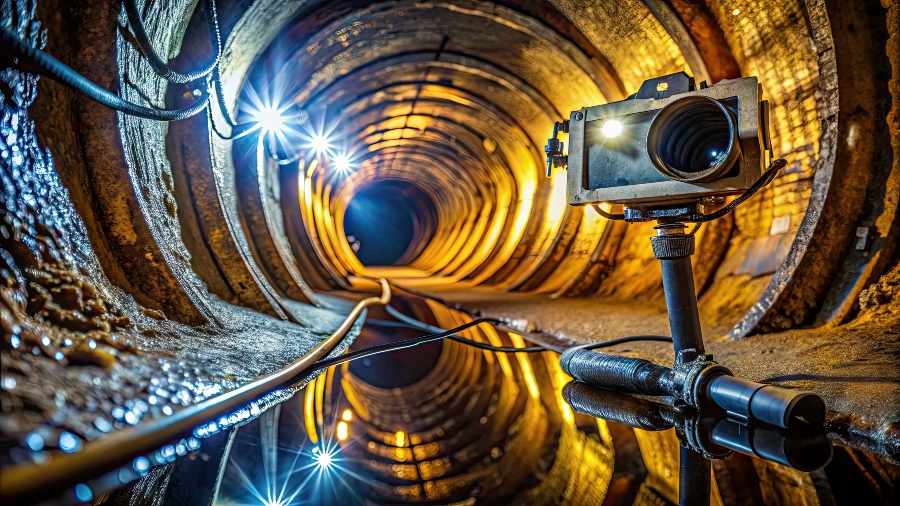
Borescopes and video endoscopes are designed for inspections in confined spaces, such as engines, pipes, and machinery. They allow for detailed visual inspections without the need for disassembly.
There are several types of borescopes, including rigid, flexible, and video borescopes. Rigid borescopes offer high image quality but limited flexibility, while flexible borescopes can navigate complex pathways. Video borescopes provide real-time video output, allowing for detailed analysis and recording.
These tools are indispensable in industries like automotive and aerospace, where internal inspections are critical for ensuring the integrity and performance of complex machinery.
4. Thermal Imaging Cameras
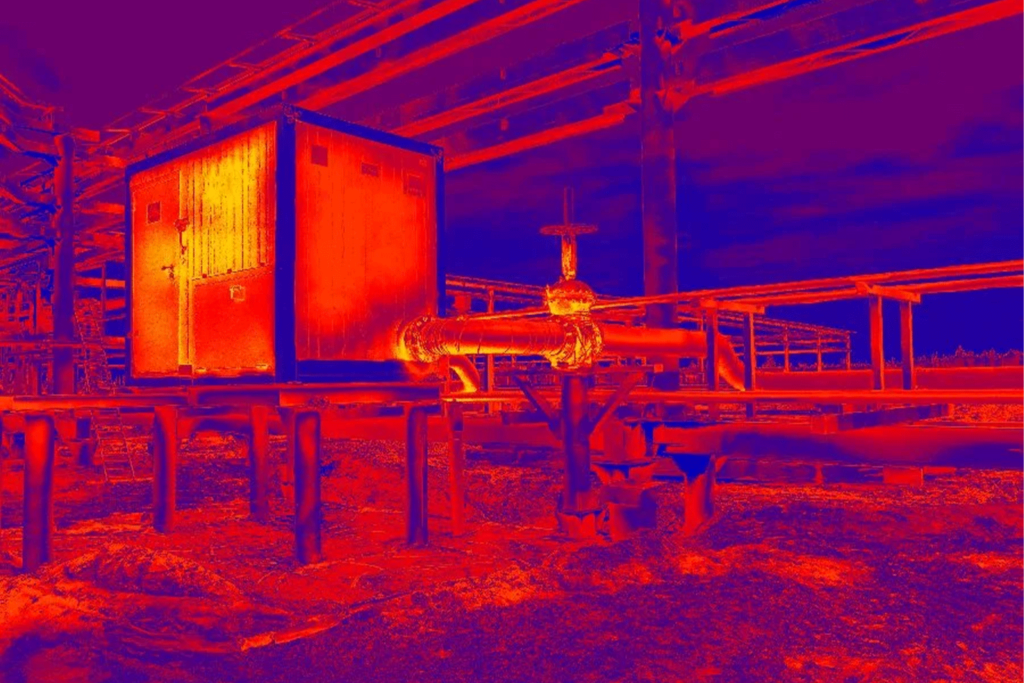
Thermal imaging cameras detect and visualize heat signatures, allowing for non-contact temperature measurement and thermal analysis. They work by capturing infrared radiation emitted by objects and converting it into a visual image.
Different types of thermal cameras are available, each with varying resolutions, sensitivity, and temperature ranges. They are used in a wide range of applications, including building inspections, electrical maintenance, and industrial process monitoring.
In addition to standard thermal imaging, specialized cameras are available for gas detection and acoustic imaging. Gas detection thermal cameras visualize gas leaks, while acoustic imaging thermal cameras pinpoint sound sources for noise and vibration analysis.
5. Optical Gas Imaging (OGI) Cameras
OGI cameras are specialized thermal imaging tools used to detect gas leaks by visualizing invisible gases like methane, propane, and other volatile organic compounds. Unlike traditional thermal cameras, OGI cameras are calibrated to specific wavelengths that correspond to the infrared absorption characteristics of targeted gases.
These cameras are commonly used in oil and gas, chemical processing, and environmental monitoring, where fast and accurate gas leak detection is essential for safety and regulatory compliance.
There are two main types of OGI cameras:
- Handheld OGI cameras. Portable and user-friendly, ideal for ground-based inspections of valves, pipelines, and equipment for fugitive emissions.
- Drone-mounted OGI cameras. Designed for aerial inspections, allowing access to elevated or remote assets such as flare stacks and storage tanks. These systems often pair with AI software for automated leak detection and compliance with EPA regulations like OOOOa.
OGI cameras are invaluable for meeting environmental compliance standards, such as those set by the EPA, and for enhancing safety by enabling early detection of potentially hazardous gas leaks.
6. Specialized Inspection Cameras
Specialized inspection cameras are designed for unique applications that require specific capabilities beyond standard visual or thermal imaging.
- High-Temperature Cameras: Used for inspecting high-temperature environments, such as furnaces and kilns.
- High-Speed Thermal Cameras: Capture rapid temperature changes for dynamic thermal analysis.
- Fixed Mount Cameras: Permanently installed for continuous monitoring of critical processes or assets.
- Moisture Meters: Measure moisture levels in various materials, crucial for building inspections and water damage assessments.
What to Look for in Inspection Cameras
Choosing the right inspection camera is crucial for ensuring accurate and efficient inspections.
Consider these 11 key factors to make an informed decision.
1. Image Quality and Resolution
High image quality and resolution are essential for capturing clear and detailed images, allowing for accurate analysis and defect detection.
2. Lighting and Visibility
Adequate lighting is crucial for inspections in dark or confined spaces. Look for cameras with adjustable LED lights or other illumination options.
3. Durability and Build Quality
Inspection cameras should be robust and durable, capable of withstanding harsh industrial environments and frequent use.
4. Cable Length and Flexibility (for Snake Cameras)
For snake cameras, cable length and flexibility are critical for accessing hard-to-reach areas. Ensure the cable is long enough and flexible enough for your specific application.
5. Portability and Ease of Use
Lightweight and easy-to-use cameras are essential for efficient inspections, especially in remote or challenging locations.
6. Special Features
Consider cameras with special features like thermal imaging, gas detection, or acoustic imaging, depending on your specific inspection needs.
7. IP Ratings
IP ratings indicate the camera’s resistance to dust and water. Choose a camera with an appropriate IP rating for your operating environment.
8. Battery Life
Long battery life is essential for extended inspections. Ensure the camera has sufficient battery capacity or consider models with replaceable batteries.
9. Cost
Balance the camera’s features and performance with your budget. Consider the long-term value and return on investment.
10. Software
User-friendly software for image and video analysis can significantly enhance inspection efficiency. Look for cameras with compatible software.
11. Inspection Camera for Phone Considerations
Some inspection cameras are designed to connect to smartphones, offering portability and convenience. When considering these models, ensure compatibility with your phone and evaluate the app’s features and ease of use.
Applications Across Industries
Inspection cameras have become indispensable tools across a wide range of industries, providing crucial insights for maintenance, safety, and quality assurance.
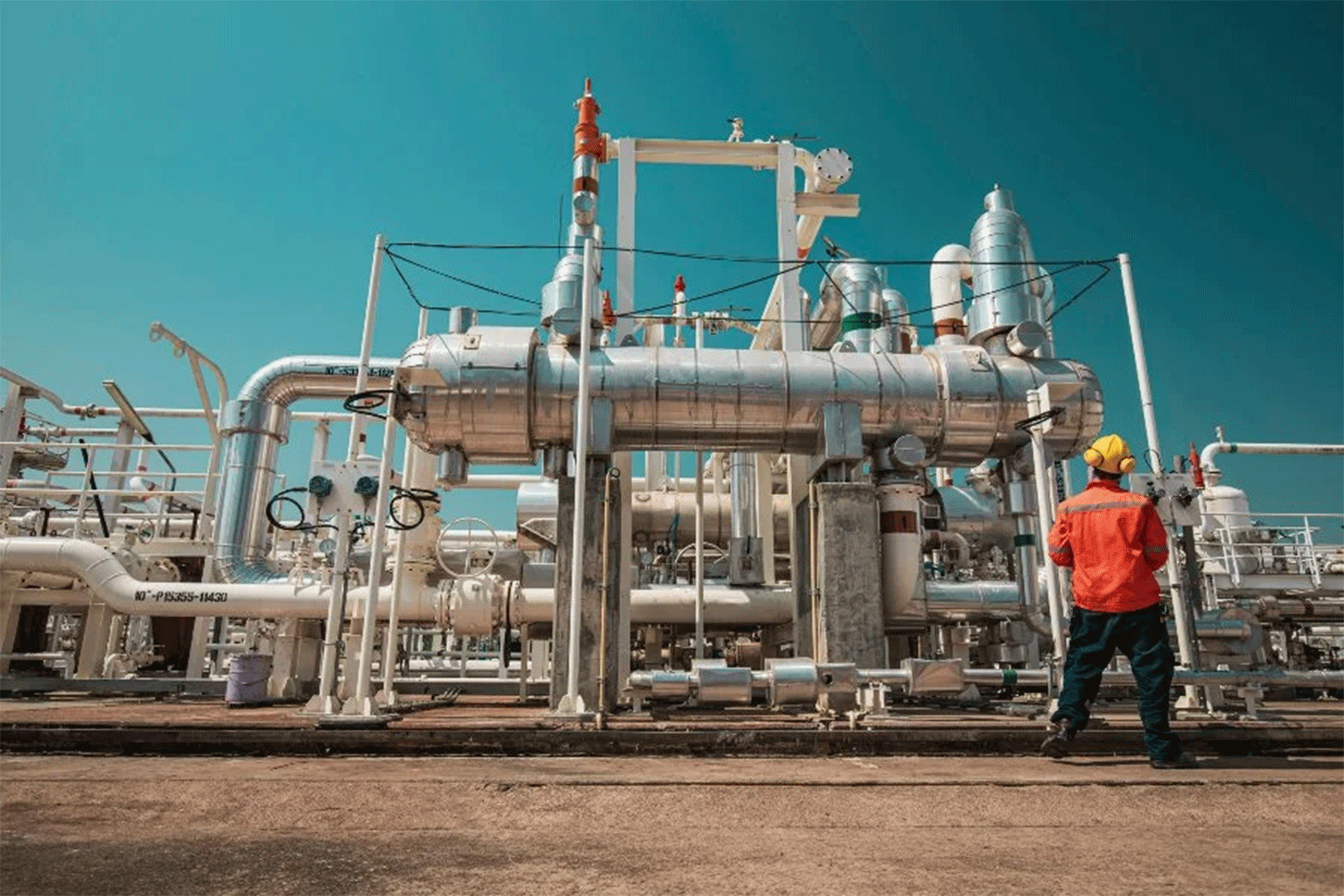
Here are examples of their applications across 7 sectors.
1. Oil and Gas Industry
Inspection cameras are used to ensure the safety and integrity of oil and gas infrastructure. Applications include:
- Inspecting pipelines, storage tanks, and refineries for corrosion and damage.
- Monitoring drilling operations and well conditions.
- Detecting gas leaks and other hazards.
- Conducting remote inspections in hazardous environments.
2. Chemical & Petrochemical Industry
Inspection cameras play a crucial role in ensuring safety and compliance in chemical and petrochemical plants. Applications include:
- Monitoring pressurized vessels, reactors, and heat exchangers for cracks, corrosion, or leaks.
- Inspecting piping systems in hazardous or confined spaces.
- Detecting gas leaks with OGI and thermal cameras to comply with emissions standards.
- Conducting visual and thermal inspections during routine maintenance or shutdowns.
3. Power Generation
In power plants, inspection cameras support preventive maintenance and reduce unplanned outages. Applications include:
- Inspecting boilers, turbines, and generators for thermal hotspots or internal defects.
- Monitoring electrical systems for overheating using thermal imaging.
- Using drones and robotic crawlers to inspect hard-to-reach components without shutdowns.
- Ensuring compliance with operational safety standards through regular equipment assessments.
4. Municipal Utilities & Water/Wastewater
Utilities use inspection cameras to maintain critical infrastructure and minimize service disruptions. Applications include:
- Inspecting sewer and stormwater lines for blockages, cracks, and infiltration.
- Assessing water tanks, treatment facilities, and pipelines for corrosion or structural issues.
- Using pipe crawlers and push cameras for real-time visual inspections in confined spaces.
- Supporting asset management and planning with video documentation of underground infrastructure.
5. Automotive and Aerospace
Inspection cameras play a vital role in the manufacturing and maintenance of vehicles and aircraft. Applications include:
- Inspecting engine components, transmissions, and other internal systems for wear and damage.
- Examining welds and structural elements for defects.
- Conducting quality control inspections during manufacturing.
- Inspecting aircraft turbines and other critical components.
6. Manufacturing and Industrial Maintenance
Inspection cameras are used to ensure product quality, optimize manufacturing processes, and prevent equipment failures. Applications include:
- Inspecting welds, castings, and other manufactured parts for defects.
- Monitoring production lines and identifying potential problems.
- Inspecting boilers, pressure vessels, and other industrial equipment.
- Conducting routine maintenance inspections to prevent breakdowns.
7. Construction and Building Inspections
Inspection cameras are used to assess structural integrity, identify hidden defects, and ensure compliance with building codes. Applications include:
- Inspecting foundations, walls, and roofs for cracks, moisture damage, and insulation issues.
- Examining HVAC systems and electrical wiring within walls and ceilings.
- Assessing the condition of pipes and plumbing systems behind walls.
- Documenting construction progress and identifying potential problems.

Best Practices for Using Inspection Cameras
Here are some tips to help you get the most out of your inspection camera:
- Proper lighting. Ensure adequate lighting in the inspection area. Use the camera’s built-in lights or external light sources to improve visibility.
- Thorough preparation. Plan your inspection route and identify areas of interest beforehand. This will help you conduct the inspection more efficiently.
- Careful maneuvering. When using snake cameras or borescopes, carefully maneuver the cable to avoid damage and ensure smooth navigation.
- Optimal focus. Adjust the camera’s focus to obtain clear images. Some cameras offer autofocus features, while others require manual adjustment.
- Record data. Capture images and videos as needed to document your findings. This data can be used for analysis, reporting, and future reference.
- Safety precautions. Follow all safety guidelines when using inspection cameras, especially in hazardous environments. Wear appropriate personal protective equipment (PPE).
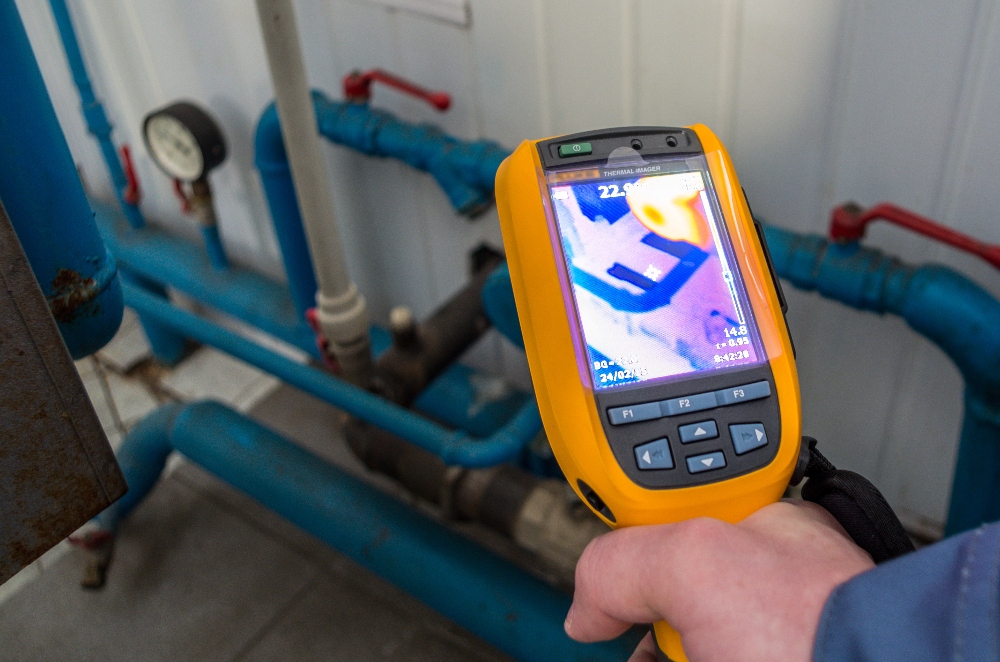
Maintenance and Care of Equipment
Proper maintenance and care will extend the life of your inspection camera and ensure optimal performance:
- Regular cleaning. Clean the camera lens and housing after each use. Use a soft, lint-free cloth to avoid scratches.
- Cable inspection. Check the cable for any damage, such as cuts or kinks. Replace damaged cables promptly.
- Battery care. Follow the manufacturer’s recommendations for battery charging and storage. Avoid overcharging or exposing batteries to extreme temperatures.
- Proper storage. Store the camera and accessories in a protective case when not in use. This will prevent damage from dust, moisture, and impact.
- Professional servicing. If necessary, have the camera serviced by a qualified technician. Do not attempt to repair complex issues yourself.
Data Management and Reporting
Effective data management and reporting are crucial for utilizing the information collected by your inspection camera:
- Organize data. Create a system for organizing and storing your inspection data. This could involve using folders, tags, or specialized software.
- Annotate images. Add annotations or notes to images and videos to highlight key findings and provide context.
- Generate reports. Create clear and concise reports that summarize your inspection results. Include relevant images, videos, and annotations.
- Backup data. Regularly back up your inspection data to prevent loss. Consider using cloud storage or external hard drives.
- Data security. Protect your inspection data from unauthorized access. Use strong passwords and encryption if necessary.
Inspection Camera FAQ
What are inspection cameras?
Inspection cameras are specialized tools designed to capture visual or other sensory data in areas that are difficult, dangerous, or impossible for direct human observation. They range from simple handheld devices to sophisticated robotic systems, and are used across various industries to assess the condition of assets, structures, and systems.
What are the different types of inspection cameras?
Here are the main types:
- Borescopes and videoscopes
- Push cameras and sewer cameras
- Thermal imaging cameras
- Optical gas imaging (OGI) cameras
- Acoustic imagers
- Drone-mounted cameras
- Cameras on robotic crawlers or marine ROVs
What are the key factors to consider when choosing an inspection camera?
Key factors to consider include image quality and resolution, lighting and visibility, durability and build quality, cable length and flexibility (for snake cameras), portability and ease of use, special features (e.g., thermal imaging, gas detection), IP ratings, battery life, cost, and software.
What are the benefits of using robotic inspection systems?
Robotic inspection systems, such as ROV and crawler systems, provide remote access for inspection cameras, enabling thorough evaluations in challenging and dangerous environments. They increase safety, reduce downtime, and allow for more frequent inspections.
How can inspection cameras improve safety?
Inspection cameras improve safety by allowing professionals to inspect hazardous environments without risking human safety. They are used in applications such as search and rescue, hazardous material inspections, and confined space inspections.
What is the role of data management in inspection camera use?
Effective data management is crucial for utilizing the information collected by inspection cameras. This includes organizing data, annotating images, generating reports, backing up data, and ensuring data security.
What are inspection cameras used for in construction?
In construction, inspection cameras are used to assess structural integrity, identify hidden defects, and ensure compliance with building codes. Applications include inspecting foundations, walls, roofs, HVAC systems, and electrical wiring.
How are inspection cameras used in plumbing?
Inspection cameras are essential for diagnosing and resolving plumbing and sewer problems. They are used to locate blockages, leaks, and corrosion in pipes, assess the condition of pipes, and inspect septic systems.


